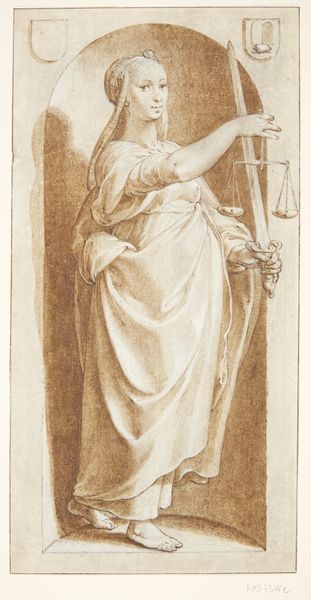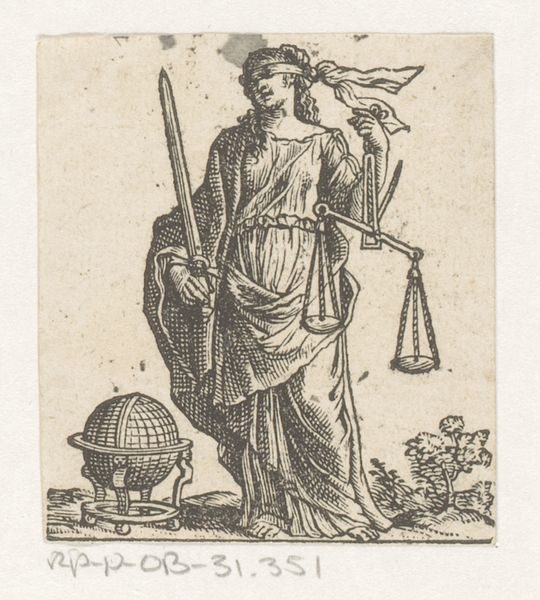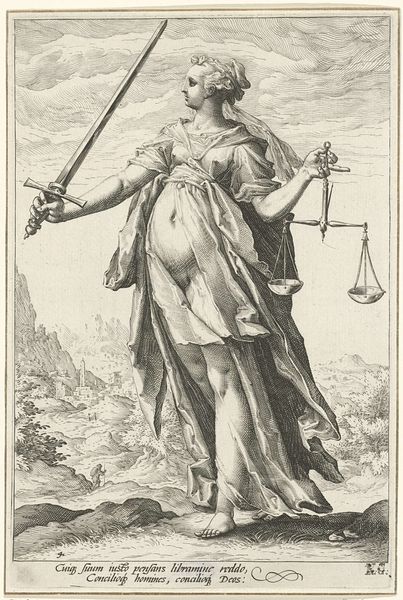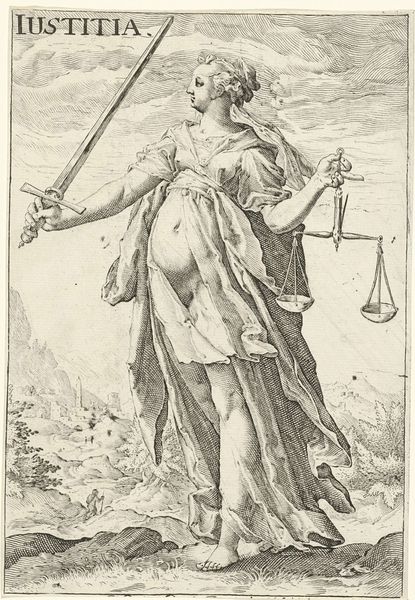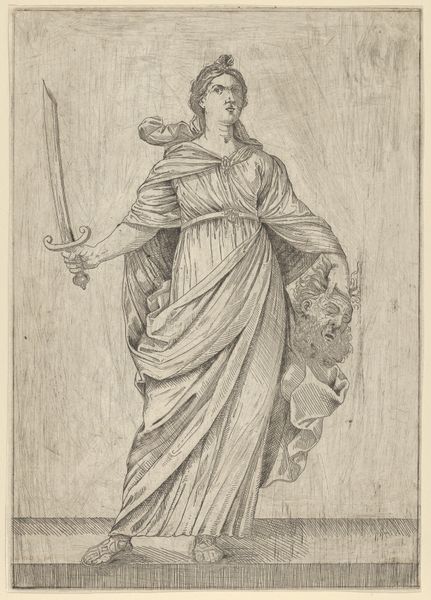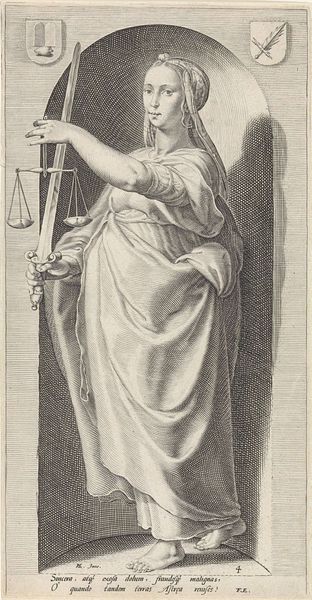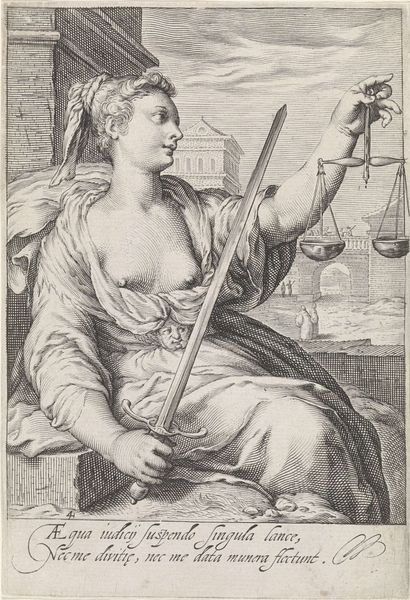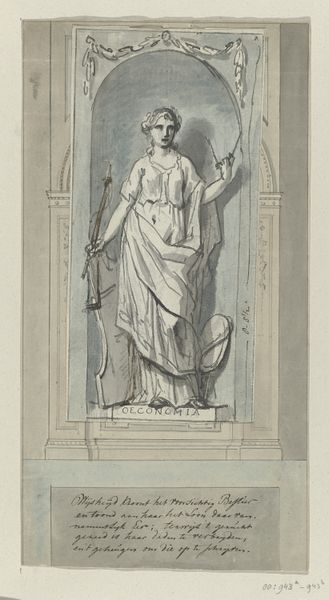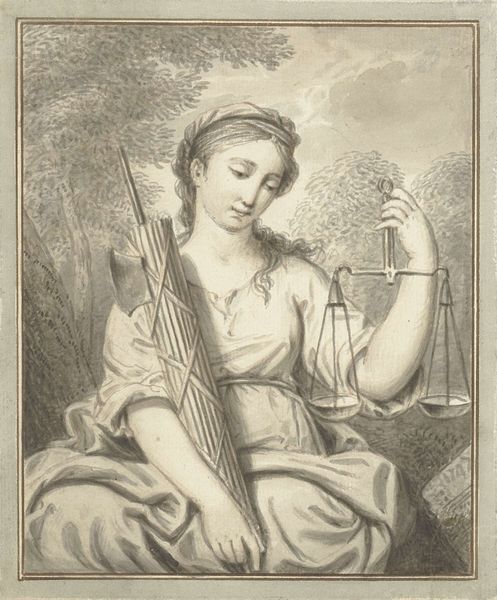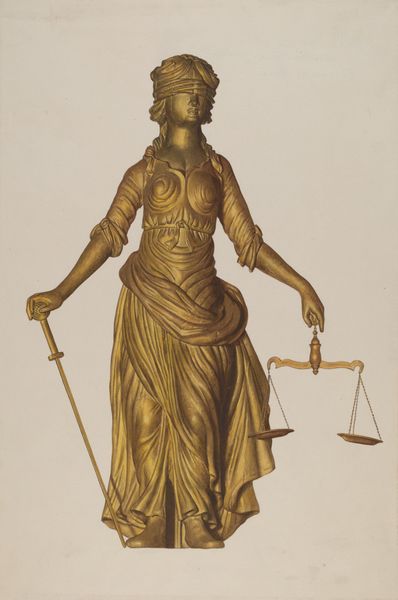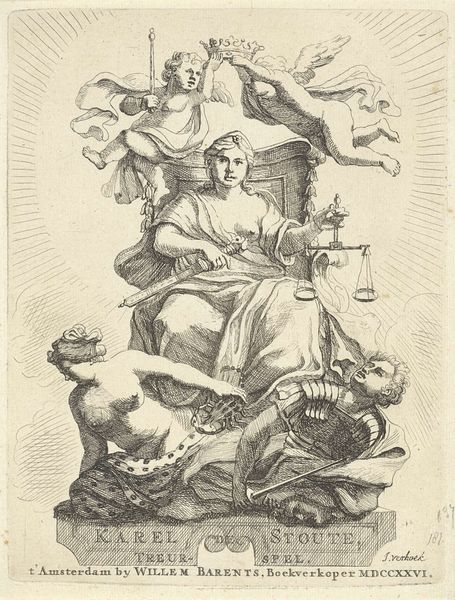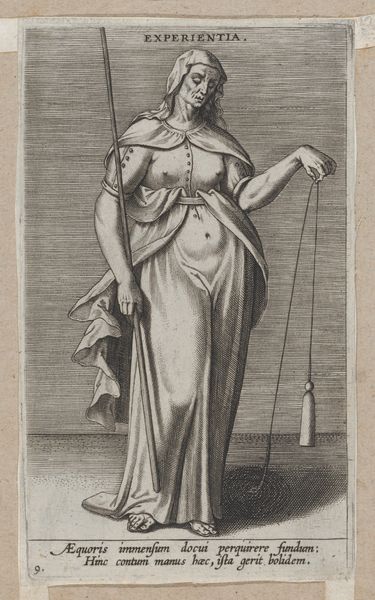
drawing, ink
#
drawing
#
allegory
#
figuration
#
11_renaissance
#
ink
#
13_16th-century
#
history-painting
Copyright: Public Domain
Curator: Here we have a drawing titled "Justice." It's by Maarten van Heemskerck, and currently residing at the Städel Museum. Editor: There’s an undeniable solemnity in the image. It’s not just the subject matter but something in the way the ink lays on the page, a controlled yet fluid technique. You can feel the weight of the concept itself. Curator: Yes, it’s potent. The blindfolded figure with her scales and sword—a powerful allegory, immediately recognizable through centuries. Blindness to represent impartiality, the scales for measuring evidence, and the sword for execution of judgement. These symbols remain entrenched within our cultural memory. Editor: Look at the deliberate nature of each line. The rendering of fabric is extraordinary, all achieved with humble materials like paper and ink. And observe how those fine details emphasize the labor, and thus, the real cost and impact of justice. What does it really take, from pen to verdict, to execute 'justice'? Curator: Absolutely. Van Heemskerck is playing with those visual tropes that we carry in our cultural understanding of justice, leaning heavily into iconographic symbolism to communicate layers of meaning. Notice the classical ruins on the left versus what appears to be a more modern city skyline on the right. Editor: The backgrounds! Fascinating... implying that this concept of Justice, in both its decay and continuation, literally exists on a foundation built through historical events and power structures. In some sense, its tools–sword and scales–become implements of cultural labor. I would also propose that there might have been some transfer here. Curator: A transfer? Do explain! Editor: Yes. Notice the fine tracing of Justice in its form? Curator: Good eyes... It almost suggests that this is either a prepatory work, or a possible workshop product by someone learning the master's style. Very insightful indeed! Editor: Considering this work from production of labor makes our role here all that more challenging, too, doesn't it? In considering the cultural labor of Heemskerck in producing this emblem, how can our viewing make this work come "alive," instead of remaining fixed like the stoic lady justice herself? Curator: It urges us to question the very fabric of law and morality in society, that's for sure. Editor: Agreed. And maybe that's the artist's intended function–not merely representing "Justice" but invoking deeper interrogations of it.
Comments
No comments
Be the first to comment and join the conversation on the ultimate creative platform.
